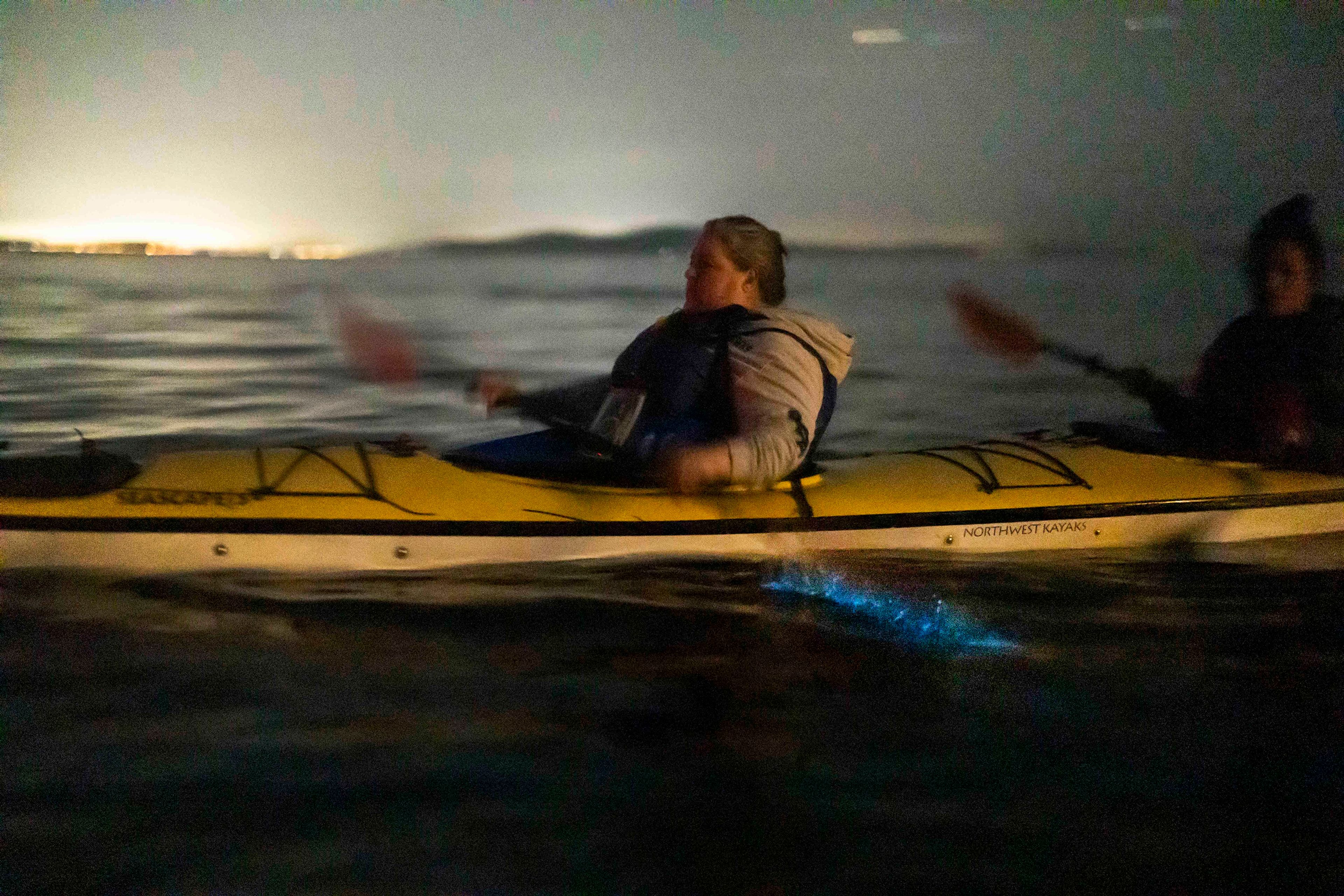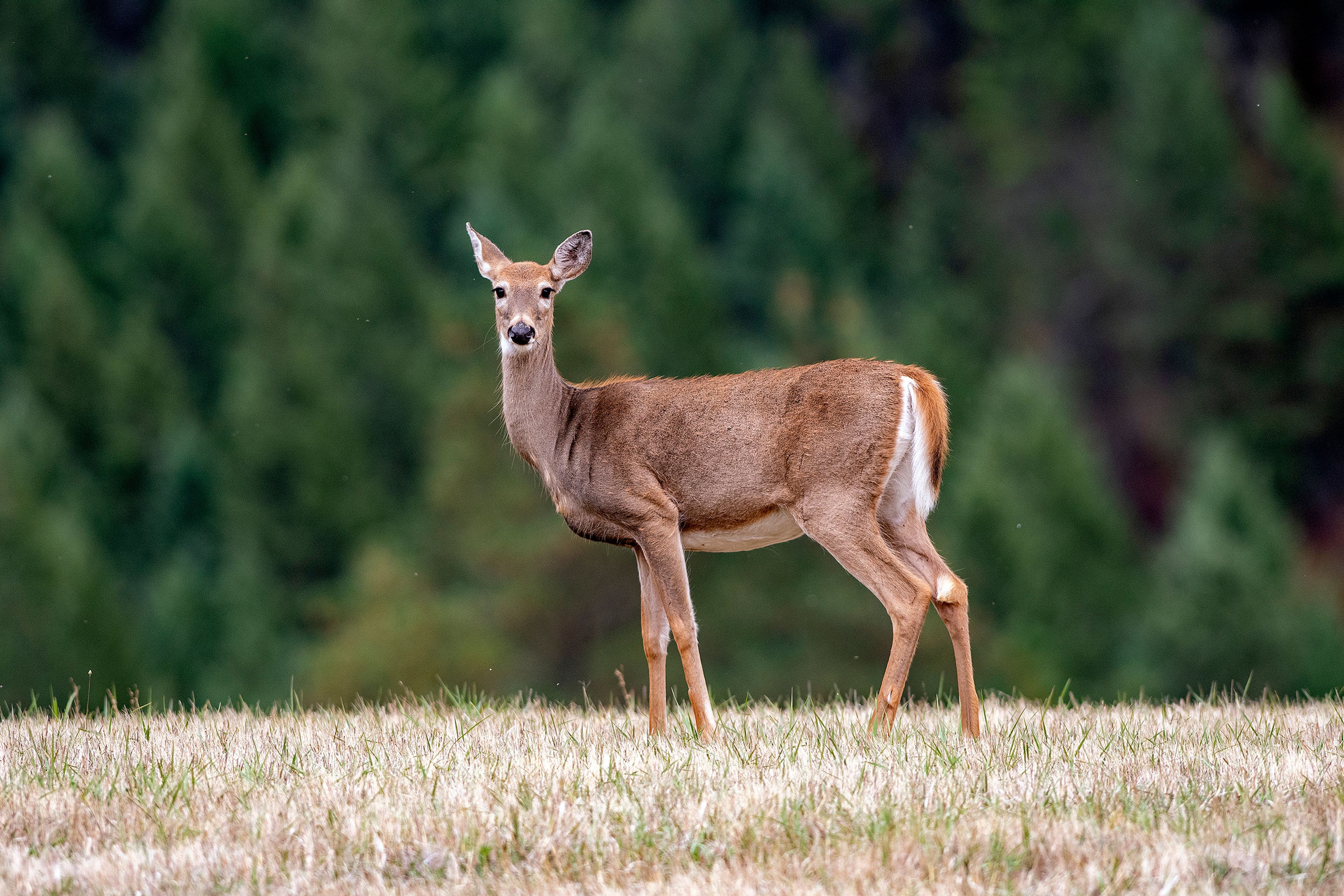Kayaking by the light of bioluminescent plankton
SEATTLE — All that glitters is not gold. Sometimes, it’s bioluminescent.
Every summer, when dinoflagellate plankton bloom throughout the Salish Sea, water glows an electric blue-green. But there’s a critical component necessary to see this stunning natural phenomenon — something has to agitate the plankton to spark the chemical reaction.
One of the best ways to ignite the sparkle (and see the bioluminescence up close)? A kayak. The visual effect is decidedly subtle — it’s not as if the entire sea lights up in a flash — but the intimacy of having the glow on your paddle is a surreal, up-close-and-personal joy.
The bow slicing through the water and the paddle dipping below the surface both trigger bioluminescence, while kayaking itself is a quiet, unobtrusive way to observe this ephemeral biological wonder. You’ll want to paddle out of the glare of artificial lights, ideally as close as possible to the new moon. The darker, the better. I’ve seen bioluminescence as far south as Hope Island, near Olympia, and beaches along Vancouver Island, B.C., report reliable plankton glows year after year.
If you don’t have a kayak or you’re not comfortable launching in the dark by yourself, there are several outfitters that run tours in late July and August. The Olympic Outdoor Center launches from Port Gamble ($69 per person), Discovery Sea Kayaks paddles off San Juan Island ($145-$160 per person) and Hood Canal Adventures leaves from Brinnon ($120 per person). Plan ahead, as many tours sell out weeks or even months in advance.
In 2023 and 2024, Bellingham-based Moondance Sea Kayak Adventures ($105 per person) and Dragonfly Kayak Tours ($99 per person) secured permits from Washington State Parks to launch from the Larrabee State Park boat ramp, which normally closes at dusk. Recently, Cascadia Daily News first reported that Washington State Parks will not allow after-hours tours following the 2024 season, citing staffing and safety concerns. Moondance plans to operate its 2025 tours from Fairhaven.
Last summer, when the park was open to nighttime kayak tours, I met Moondance owner and guide Sophia Rouches at the Larrabee State Park boat launch in the waning hours of daylight ahead of our bioluminescent kayaking tour. She recalls playing with sticks in the shallows of the San Juan Islands on summer evenings to make the plankton come alive. But when she got into a kayak, the experience changed.
“The act of paddling felt really different. It puts the bioluminescence right at your fingertips,” said Rouches, who studied environmental education at Western Washington University in Bellingham. “I realized, this is the best way to see it.”
On our tour, my group donned life jackets and spray skirts before a quick paddling technique lesson and the assignment of sturdy tandem sea kayaks. After the safety talk, we launched around dusk and enjoyed the fading light of a Pacific Northwest summer evening in one of the most picturesque coves on the coastline between Seattle and the Canadian border. Even though downtown Bellingham is just 8 miles away, the rugged outcropping of Governors Point shields you from the bright city lights. As we waited for the sky to darken, I ogled the point’s cliff-top homes and admired the steep rise of Lummi Island across Bellingham Bay.
Sunset on the water is an eminently peaceful delight of its own, but the best was yet to come. Slowly but surely, as the last dusk light faded, the water began to sparkle.
At first, you’ll think you’re imagining things, perhaps willing the bioluminescence into existence, but the darker it gets, the more visible the plankton become. As the first bioluminescence danced on our paddles last summer, kayakers gasped and squealed. Our guides kept in voice contact, beckoning us whichever direction seemed to produce the most glow. Without a destination, we paddled at a relaxed pace.
We barely covered a few miles in two hours then returned to shore. As the last kayaks beached, the water went from blue glow to inky black — the bioluminescence like a dormant volcano, waiting to erupt.









